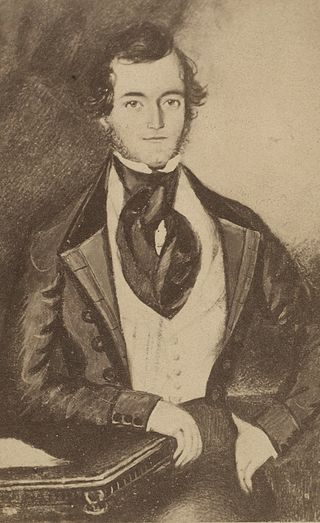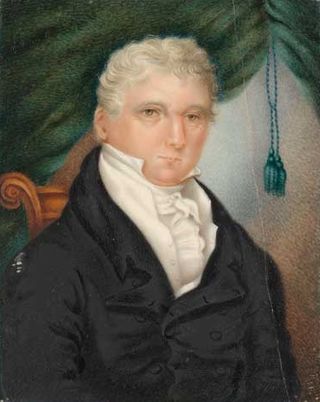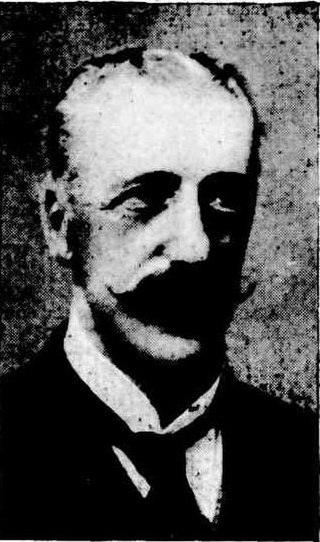
Sir Charles Lilley was a Premier and Chief Justice of the Supreme Court of Queensland. He had a significant influence on the form and spirit of state education in colonial Queensland which lasted well into the 20th century.

Gundagai is a town in New South Wales,Australia. Although a small town,Gundagai is a popular topic for writers and has become a representative icon of a typical Australian country town. Located along the Murrumbidgee River and Muniong,Honeysuckle,Kimo,Mooney Mooney,Murrumbidgee and Tumut mountain ranges,Gundagai is 390 kilometres (240 mi) south-west of Sydney. Until 2016,Gundagai was the administrative centre of Gundagai Shire local government area. In the 2021 census,the population of Gundagai was 2,057.

Daniel Henry Deniehy was an Australian journalist,orator and politician;and early advocate of democracy in colonial New South Wales.

The Federation of Australia was the process by which the six separate British self-governing colonies of Queensland,New South Wales,Victoria,Tasmania,South Australia,and Western Australia agreed to unite and form the Commonwealth of Australia,establishing a system of federalism in Australia. The colonies of Fiji and New Zealand were originally part of this process,but they decided not to join the federation. Following federation,the six colonies that united to form the Commonwealth of Australia as states kept the systems of government that they had developed as separate colonies,but they also agreed to have a federal government that was responsible for matters concerning the whole nation. When the Constitution of Australia came into force,on 1 January 1901,the colonies collectively became states of the Commonwealth of Australia.

The Geelong Advertiser is a daily newspaper circulating in Geelong,Victoria,Australia,the Bellarine Peninsula,and surrounding areas. First published on 21 November 1840,the Geelong Advertiser is the oldest newspaper title in Victoria and the second-oldest in Australia. The newspaper is currently owned by News Corp. It was the Pacific Area Newspaper Publishers Association 2009 Newspaper of the Year.

Blackdown,or Black Down,summit elevation 279.7 metres (918 ft) AMSL,is the highest point in both the historic county of Sussex and the South Downs National Park. It is one of the highest points in the south east of England,exceeded by Walbury Hill,Leith Hill and Pilot Hill. Blackdown is protected as part of the South Downs National Park.

William Henry Traill was an Australian journalist and politician,commonly referred to as W. H. Traill. He was an early editor and for a period the principal proprietor of The Bulletin in Sydney.
The following lists events that happened during 1888 in Australia.

Joseph Hawdon was a pioneer settler and overlander of Australia,and pioneer and politician of New Zealand.

Since 1867,the British royal family has visited Australia over fifty times,with only six visits before 1954. Elizabeth II was the first reigning monarch of Australia to have set foot on Australian soil;she first did so on 3 February 1954,when she was 27 years old. During her sixteen journeys,the Queen visited every Australian state and the two major territories. In all,the reigning Australian monarch has visited Australia seventeen times,sixteen times under Elizabeth II,and once under Charles III.

Simeon Lord was a pioneer merchant and a magistrate in Australia. He became a prominent trader in Sydney,buying and selling ship cargoes. Despite being an emancipist Lord was made a magistrate by Governor Lachlan Macquarie,and he became a frequent guest at government house. His business dealings were extensive. He became one of Sydney's wealthiest men. He was at various times a retailer,auctioneer,sealer,pastoralist,timber merchant and manufacturer. He is mentioned in many Australian History books,in particular regarding his status as an emancipist.

Sir William Henry Fancourt Mitchell was a British-born Australian police commissioner and politician,President of the Victorian Legislative Council for fourteen years.
Selection is the act of choosing and acquiring a subdivided tract of land for farming purposes in Australia. A selection is also descriptive of the plot of land that was selected. The term derived from "free selection before survey" of crown land in some Australian colonies under land legislation introduced in the 1860s. These acts were intended to encourage closer settlement,based on intensive agriculture,such as wheat-growing,rather than extensive agriculture,such as wool production. Selectors often came into conflict with squatters,who already occupied the land and often managed to circumvent the law.

Barfold is a locality on the Heathcote-Kyneton Road (C326) in Victoria,Australia. It has a community hall,Barfold Hall,and an Anglican church,Barfold Union Church.
Cuppacumbalong is an historic homestead located near the southern outskirts of Canberra in the Australian Capital Territory. It is also the name of a former 4,000-acre (16 km2) sheep and cattle grazing property that surrounded the homestead near the junction of the Murrumbidgee and Gudgenby rivers. The word Cuppacumbalong is Aboriginal in origin and means 'meeting of the waters'. One of the property's early owners Leopold Fane De Salis made a noteworthy contribution to political life during colonial times and furthermore,Cuppacumbalong has strong connections to the life of William Farrer,the father of the Australian wheat industry.

William Henry Suttor (Senior) was an Australian pastoralist and politician.

Oscar John de Satgé (1836–1906) was an Australian squatter and politician. He was a Member of the Queensland Legislative Assembly.

William Yaldwyn was a politician in Queensland,Australia. He was a member of the Queensland Legislative Council.

Samuel Henry Terry was an Australian politician.
Henry O'Brien was an Irish-born politician and pastoralist in New South Wales,Australia.

















